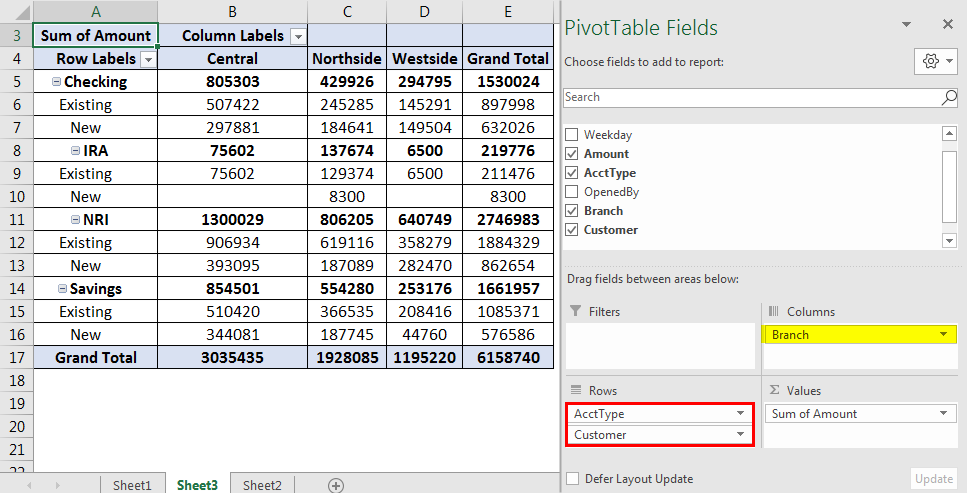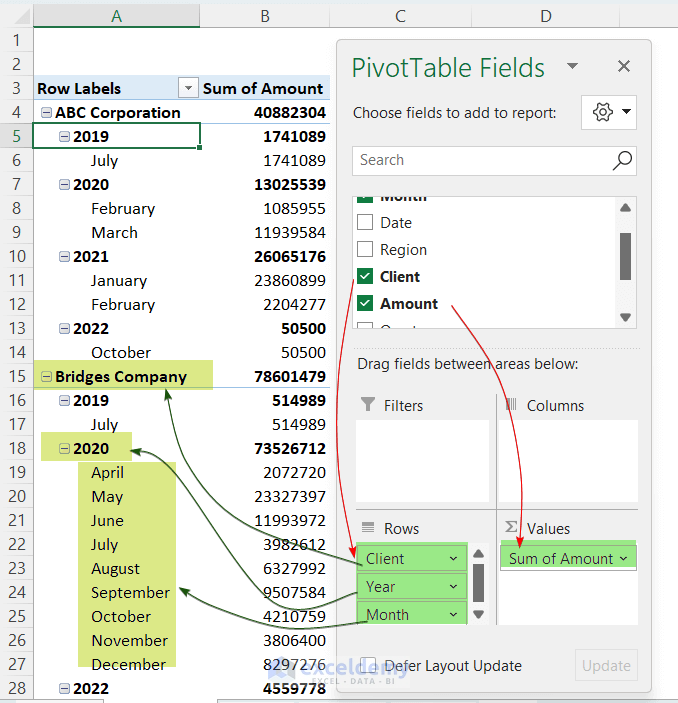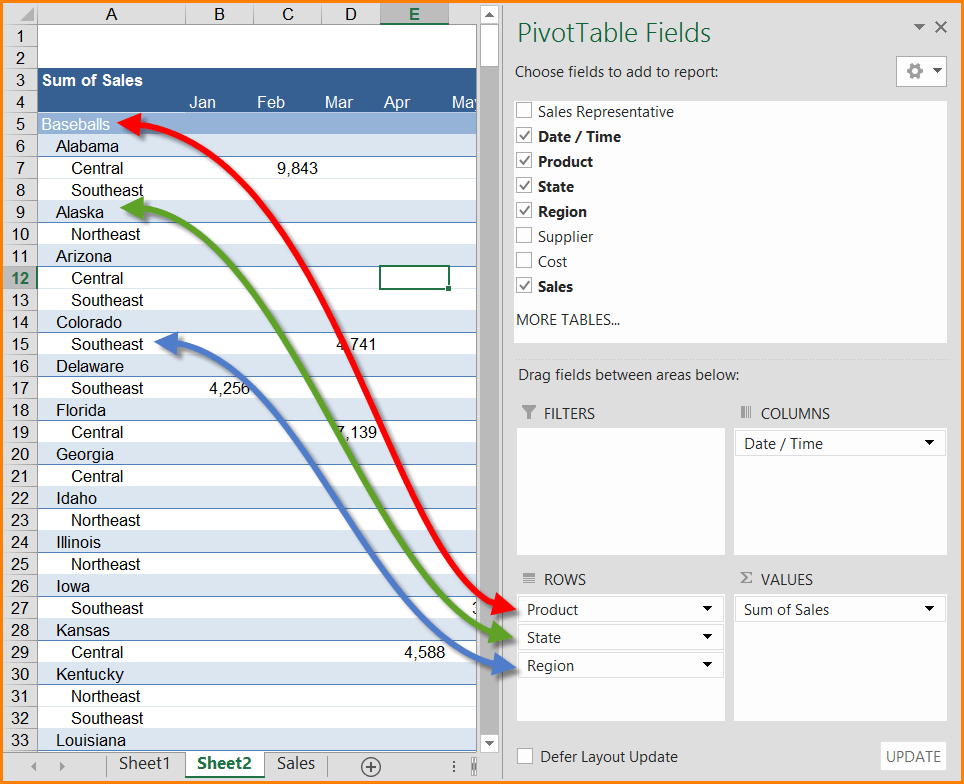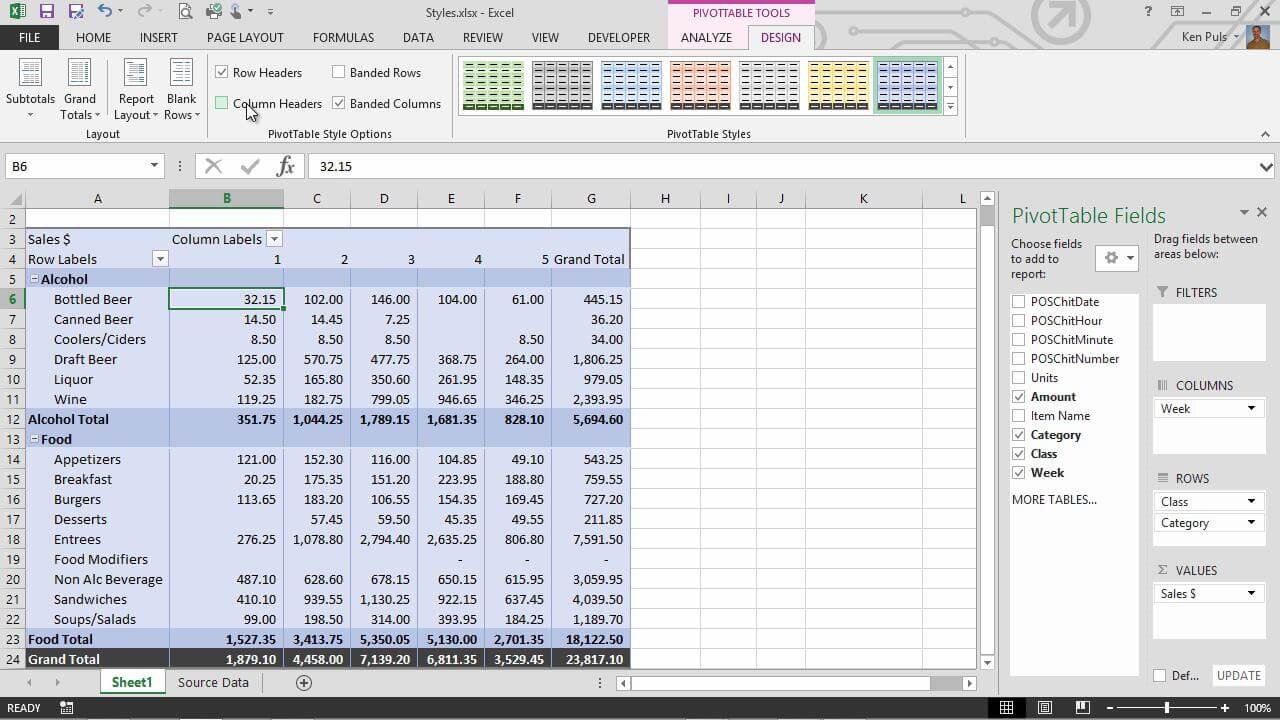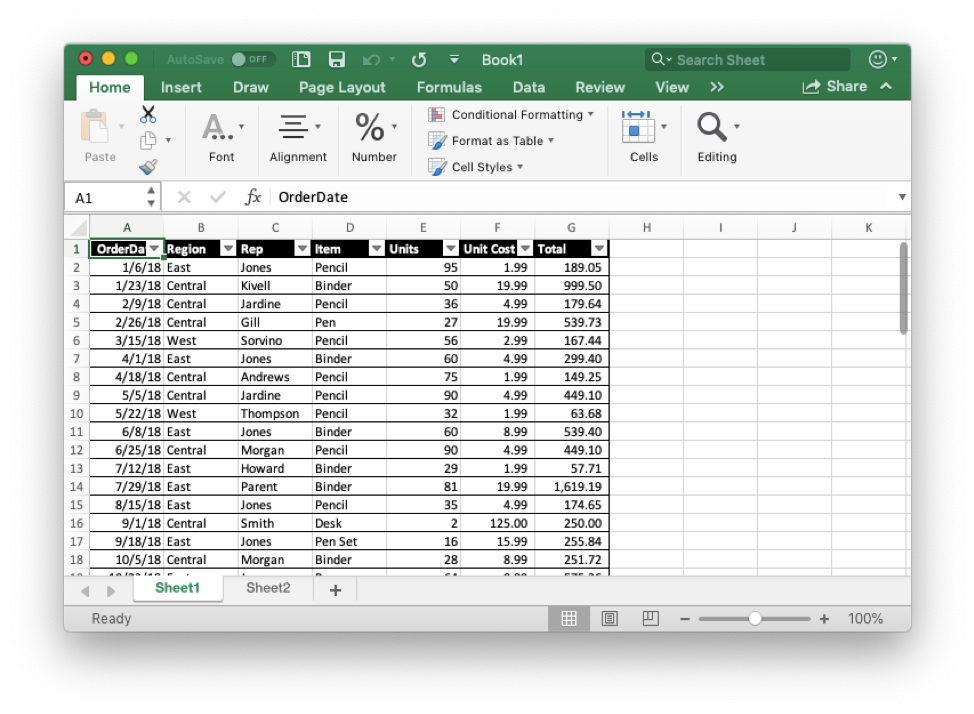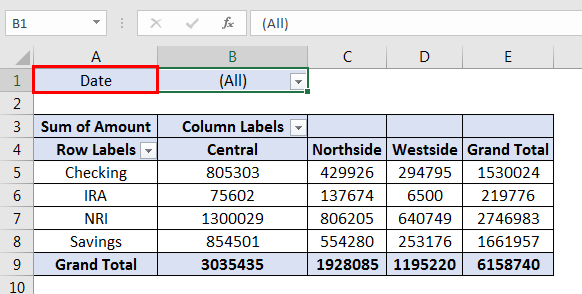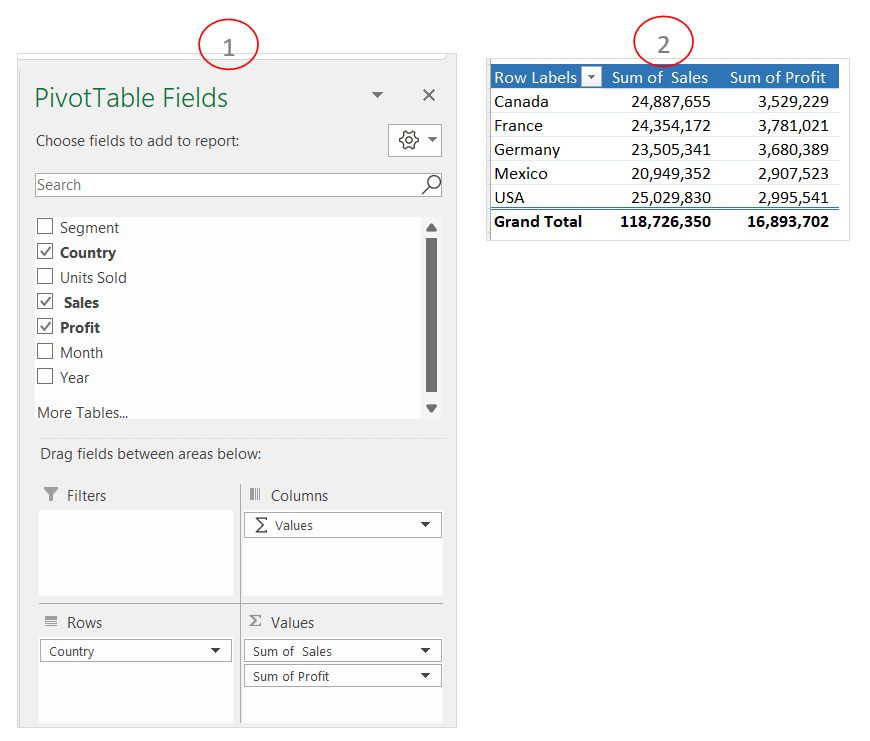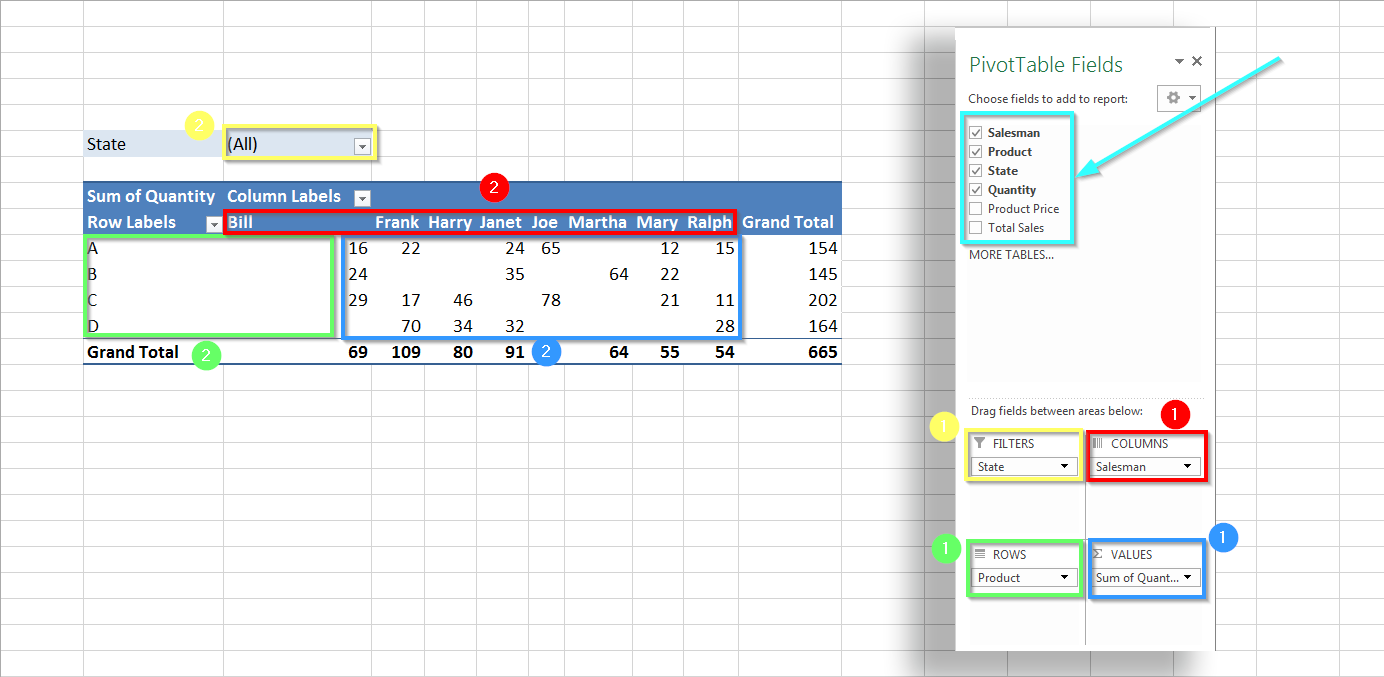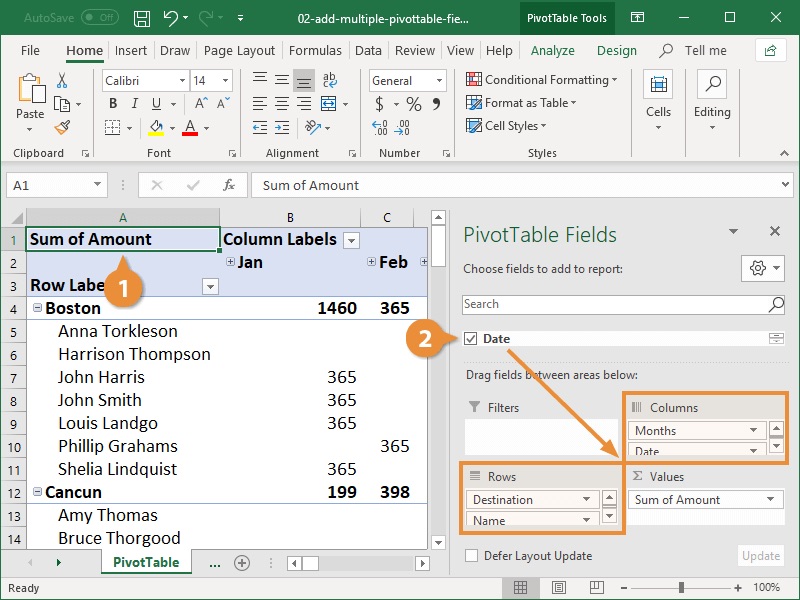A Pivot Table Allows All Of The Following Except

In the modern data-driven world, the ability to swiftly analyze and summarize vast datasets is paramount. Pivot tables, a cornerstone feature in spreadsheet software like Microsoft Excel and Google Sheets, are indispensable tools for countless professionals. However, understanding the capabilities *and limitations* of pivot tables is crucial to avoid misinterpretations and ensure accurate data-driven decisions.
This article delves into the functionalities of pivot tables, exploring what they can do exceptionally well while pinpointing a key operation they fundamentally cannot perform: direct data modification within the pivot table structure itself. We will examine the implications of this limitation, offering insights into alternative approaches and highlighting the importance of understanding the interplay between pivot tables and underlying source data.
Understanding Pivot Table Capabilities
Pivot tables are designed for aggregation and summarization. They allow users to rearrange and recalculate data from a source dataset, presenting it in a concise and insightful manner. This includes tasks like calculating sums, averages, counts, and other statistical measures across various categories.
Users can easily drag and drop fields to rearrange the table's structure. This provides different perspectives on the data without altering the underlying source. This flexibility is the core strength of pivot tables, enabling rapid exploration and identification of trends.
The ability to filter data is also crucial. Users can selectively include or exclude specific values, focusing their analysis on relevant subsets. This allows for granular examination of the data, revealing patterns that might be obscured in the full dataset.
Common Pivot Table Operations:
Pivot tables excel at several key operations, including:
Summarizing Data: Aggregating data based on different categories, revealing overall trends and patterns.
Filtering Data: Selectively including or excluding data based on specific criteria, focusing the analysis.
Sorting Data: Arranging data within rows and columns to highlight key values or trends.
Grouping Data: Combining similar values into broader categories for easier analysis. For example, grouping sales data by month or quarter.
Performing Calculations: Calculating sums, averages, counts, percentages, and other statistical measures.
The Critical Limitation: Direct Data Modification
Despite their extensive capabilities, pivot tables have a fundamental limitation: they cannot directly modify the underlying source data. A pivot table is a presentation layer. It displays an aggregated and summarized view of the original dataset, but it doesn't alter the original data itself.
Any attempt to directly edit a value within a pivot table will trigger an error message. The software will prompt the user to modify the source data instead. This is a crucial design principle that safeguards the integrity of the original data.
This limitation is intentional. It prevents accidental or unintentional changes to the raw data, which could have serious consequences for analysis and reporting.
Implications of the No-Modification Rule
The inability to directly edit data within a pivot table has several important implications:
Data Integrity: The original dataset remains untouched, ensuring the accuracy and reliability of the source information. This is crucial for audit trails and maintaining data consistency.
Traceability: Any changes made to the data can be traced back to the original source, providing a clear audit trail of all modifications.
Preventing Errors: Prevents unintentional errors that could arise from directly editing aggregated values, potentially distorting the overall analysis.
Alternative Approaches to Data Modification
While pivot tables don't allow direct modification, there are several alternative approaches to consider when data correction or manipulation is necessary:
Modify the Source Data: The most straightforward approach is to directly edit the original dataset. After changes are made, the pivot table can be refreshed to reflect the updated data.
Create Calculated Fields: Pivot tables allow the creation of calculated fields, which perform calculations based on existing data. This can be used to derive new values without altering the original dataset.
Use External Data Sources: For more complex transformations, consider using external data sources or programming languages like Python or R to manipulate the data before importing it into the spreadsheet software and creating the pivot table.
Utilize Power Query (Excel): Power Query allows users to extract, transform, and load data from various sources. It is a powerful tool for data cleaning and preparation before creating pivot tables.
Expert Perspectives
According to Microsoft's official documentation on Excel, "You can't directly change values in a PivotTable. You need to change the source data, and then refresh the PivotTable." This reinforces the core principle of data integrity within the pivot table environment.
"Pivot tables are powerful analytical tools, but they are not data entry tools. Their primary function is to summarize and present data, not to modify it." - Data Analytics Expert, Dr. Anya Sharma
Understanding this distinction is vital for any data analyst. It ensures that analyses are based on reliable data and that changes are made responsibly.
Looking Ahead: The Future of Data Analysis Tools
While the fundamental limitation of pivot tables regarding direct data modification is unlikely to change, data analysis tools continue to evolve. Future iterations of spreadsheet software may incorporate more sophisticated data cleaning and transformation capabilities directly within the pivot table interface, streamlining the workflow for users.
The integration of artificial intelligence (AI) and machine learning (ML) could automate data cleaning tasks and suggest potential corrections. This will significantly improve the efficiency and accuracy of data analysis.
Ultimately, the key to effective data analysis lies in understanding the strengths and weaknesses of the tools at hand. By recognizing the limitations of pivot tables and employing appropriate alternative approaches, users can ensure the integrity and accuracy of their data-driven decisions.
